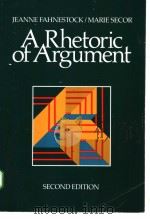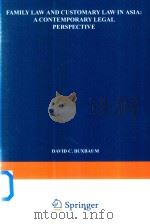《LOGICAL TOOLS FOR MODELLING LEGAL ARGUMENT A STUDY OF DEFEASIBLE REASONING IN LAW》
| 作者 | HENRY PRAKKEN 编者 |
|---|---|
| 出版 | KLUWER ACADEMIC PUBLISHERS |
| 参考页数 | 314 |
| 出版时间 | 1997(求助前请核对) 目录预览 |
| ISBN号 | 0792347765 — 求助条款 |
| PDF编号 | 813697478(仅供预览,未存储实际文件) |
| 求助格式 | 扫描PDF(若分多册发行,每次仅能受理1册) |
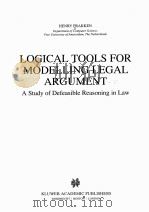
1 INTRODUCTION1
1.1 AI, Logic and Legal Reasoning: Some General Remarks1
1.1.1 An Overview1
1.1.2 Artificial Intelligence2
1.1.3 Computable Aspects of Legal Reasoning5
1.1.4 The Role of Logic6
1.2 The Focus of Research7
1.3 Logic and AI8
1.3.1 The Declarative vs.Procedural Debate8
1.3.2 Logics and Programming Systems9
1.3.3 Logic and Reasoning11
1.4 Points of Departure12
1.5 The Structure of this Book13
2 THE ROLE OF LOGIC IN LEGAL REASONING15
2.1 Three Misunderstandings about Logic16
2.1.1 ‘To Formalize is to Define Completely’16
2.1.2 ‘Formalization Leaves No Room for Interpretation’17
2.1.3 ‘Logic Excludes Nondeductive Modes of Reasoning’18
2.2 The ‘Deductivist Fallacy’18
2.2.1 ‘Naive Deductivism’19
2.2.2 The Criticism20
2.2.3 The Misunderstanding23
2.2.4 The Merits of the Criticism25
2.3 Noninferential Reasoning with Logical Tools26
2.4 Rule-based and Case-based Reasoning30
2.5 Summary31
3 THE NEED FOR NEW LOGICAL TOOLS33
3.1 The Separation of Rules and Exceptions in Legislation34
3.1.1 Terminology35
3.1.2 Examples36
3.1.3 Formalizations in Standard Logic37
3.1.4 Nonstandard Methods41
3.2 Defeasibility of Legal Rules47
3.3 Open Texture49
3.3.1 Classification Problems50
3.3.2 Defeasibility of Legal Concepts52
3.3.3 Vagueness54
3.4 Which Nonstandard Techniques are Needed?55
3.4.1 Reasoning with Inconsistent Information55
3.4.2 Nonmonotonic Reasoning56
3.5 AI-and-law Programs with Nonstandard Features61
3.5.1 The Law as Logic Programs61
3.5.2 TAXMAN ⅡⅡ61
3.5.3 Gardner’s Program62
3.5.4 CABARET63
4 LOGICS FOR NONMONOTONIC REASONING67
4.1 Nonmonotonic Logics68
4.1.1 Consistency-based Approaches68
4.1.2 Autoepistemic Logic73
4.1.3 Minimization76
4.1.4 Conditional Approaches87
4.1.5 Inconsistency Handling89
4.2 General Issues93
4.2.1 Preferential Entailment93
4.2.2 Properties of Consequence Notions94
4.2.3 Connections96
4.2.4 Truth Maintenance Systems97
4.3 Objections to Nonmonotonic Logics97
4.3.1 ‘Logic is Monotonic’97
4.3.2 Intractability99
5 REPRESENTING EXPLICIT EXCEPTIONS101
5.1 Introduction102
5.1.1 Methods of Representing Rules and Exceptions102
5.1.2 Kinds of Exceptions102
5.1.3 Requirements for Representing Rules and Exceptions103
5.2 Default Logic105
5.2.1 Specific Exception Clauses106
5.2.2 General Exception Clauses107
5.2.3 Evaluation111
5.3 Circumscription112
5.4 Poole’s Framework for Default Reasoning117
5.5 Logic-programming’s Negation as Failure120
5.5.1 Specific Exception Clauses121
5.5.2 General Exception Clauses122
5.5.3 Logic Programs with Classical Negation125
5.5.4 Summary129
5.6 Evaluation129
5.6.1 A Formalization Methodology130
5.6.2 Directionality of Defaults134
5.6.3 Contrapositive Inferences135
5.6.4 Assessment of the Exception Clause Approach136
6 PREFERRING THE MOST SPECIFIC ARGUMENT141
6.1 Introduction141
6.2 Poole: Preferring the Most Specific Explanation143
6.3 Problems148
6.3.1 Some Possible Facts are Irrelevant148
6.3.2 Multiple Conflicts Ignored149
6.3.3 Defaults Cannot be Represented in Standard Logic150
6.4 A System for Constructing and Comparing Arguments151
6.4.1 General Remarks151
6.4.2 The Underlying Logical Language152
6.4.3 Arguments154
6.4.4 Conflicts Between Arguments156
6.4.5 Comparing Arguments158
6.4.6 Informal Summary163
6.5 The Assessment of Arguments163
6.5.1 The General Idea163
6.5.2 The Dialogue Game Defined166
6.5.3 Illustrations170
6.6 Combining Priorities and Exception Clauses172
6.6.1 Extending the System172
6.6.2 Illustrations175
6.7 Evaluation177
7 REASONING WITH INCONSISTENT INFORMATION179
7.1 Introduction179
7.2 Existing Formalizations of Inconsistency Tolerant Reasoning180
7.2.1 AlchourronMakinson (1981)181
7.2.2 Belief Revision Approaches183
7.2.3 Brewka’s Preferred-subtheories Approach187
7.3 Diagnosis188
7.4 Hierarchical Defeat191
7.5 General Features of the System193
7.5.1 Properties of the Consequence Notion193
7.5.2 Sceptical and Credulous Reasoning195
7.5.3 Floating Conclusions196
7.5.4 Accrual of Arguments198
7.6 Conclusion200
8 REASONING ABOUT PRIORITY RELATIONS203
8.1 Introduction203
8.2 Legal Issues204
8.2.1 Legal Collision Rules204
8.2.2 Requirements for a Formal Analysis205
8.3 Extending the Definitions206
8.4 A Formalization Methodology210
8.5 Examples212
8.6 An Alternative Method217
9 SYSTEMS FOR DEFEASIBLE ARGUMENTATION219
9.1 Argumentation Systems219
9.2 Some Argumentation Systems221
9.2.1 The Bondarenko-Dung-Kowalski-Toni Approach221
9.2.2 Pollock226
9.2.3 Lin and Shoham229
9.2.4 Vreeswijk’s Abstract Argumentation Systems230
9.2.5 Nute’s Defeasible Logic232
9.2.6 Simari and Loui235
9.2.7 Geffner and Pearl’s Conditional Entailment235
9.2.8 General Comparison237
9.3 Other Relevant Research238
9.3.1 Brewka’s Later Work238
9.3.2 Reason-based Logic240
10 USING THE ARGUMENTATION SYSTEM249
10.1 A Comparison of the Methods for Representing Exceptions249
10.2 Implement at ional Concerns253
10.3 Applications255
10.3.1 Toulmin on the Structure of Arguments255
10.3.2 The System as a Tool in Reasoning256
10.4 A Logical Analysis of Some Implemented Systems258
10.4.1 Gardner’s Program258
10.4.2 CABARET261
10.4.3 Applications of Logic Metaprogramming262
10.4.4 Freeman and Farley’s DART System263
10.4.5 The Pleadings Game264
10.5 Four Layers in Legal Argumentation270
11 CONCLUSION275
11.1 Summary275
11.2 Main Results276
11.3 Implications for Other Issues281
11.4 Suggestions for Further Research284
A NOTATIONS, ORDERINGS AND GLOSSARY287
A1 General Symbols and Notations287
A2 Ordering Relations288
A3 Notions of the Argumentation System of Chapters 6-8289
A4 Glossary289
REFERENCES293
INDEX303
1997《LOGICAL TOOLS FOR MODELLING LEGAL ARGUMENT A STUDY OF DEFEASIBLE REASONING IN LAW》由于是年代较久的资料都绝版了,几乎不可能购买到实物。如果大家为了学习确实需要,可向博主求助其电子版PDF文件(由HENRY PRAKKEN 1997 KLUWER ACADEMIC PUBLISHERS 出版的版本) 。对合法合规的求助,我会当即受理并将下载地址发送给你。
高度相关资料
-
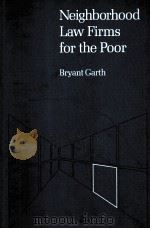
- NEIGHBORHOOD LAW FIRMS FOR THE POOR:A COMPARATIVE STUDY OF RECENT DEVELOPMENTS IN LEGAL AID AND IN T
- 1980 SIJTHOFF & NOORDHOFF
-

- Endocrinology : A logical approach for clinicians
- 1987 Mcgraw-hill international editions
-

- HANDBOOK OF DEFEASIBLE REASONING AND UNCERTAINTY MANAGEMENT SYSTEMS VOLUME 3 BELIEF CHANGE
- 1998 KLUWER ACADEMIC PUBLISHERS
-
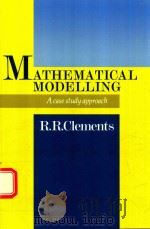
- MATHEMATICAL MODELLING A CASE STUDY APPROACH
- 1989 CAMBRIDGE UNIVERSITY PRESS
-
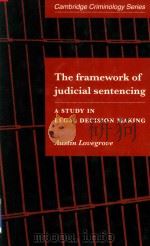
- The framework of Judicial sentencing A Study in Legal Decision Making
- 1997 Cambridge University Press
-

- MISCONDUCT OF STUDENTS A LEGAL AND DISCPLINARY STUDY
- 1981 DEEP AND DEEP PUBLICATIONS
-

- In Search of Open Skies Law and Policy for a New Era in International Aviation a Comparative study o
- 1997 Kluwer Law International
-

- ABORTION A CASE STUDY IN LAW AND MORALS
- 1983 GREENWOOD PRESS
-
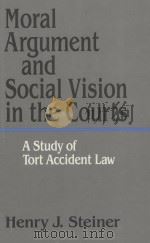
- MORAL ARGUMENT AND SOCIAL VISION IN THE COURTS A STUDY OF TORT ACCIDENT LAW
- 1987 THE UNIVERSITY OF WISCONSIN PRESS
-

- THE CONSTITUTION OF PAPUA NEW GUINEA A STUDY IN LEGAL NATIONALISM
- 1978 THE LAW BOOK COMPANY LIMITED
-

- LAWYERS AND TOUTS A STUDY IN THE SOCIOLOGY OF LEGAL PROFESSION
- 1982 HINDUSTAN PUBLISHING CORPORATION
提示:百度云已更名为百度网盘(百度盘),天翼云盘、微盘下载地址……暂未提供。➥ PDF文字可复制化或转WORD
